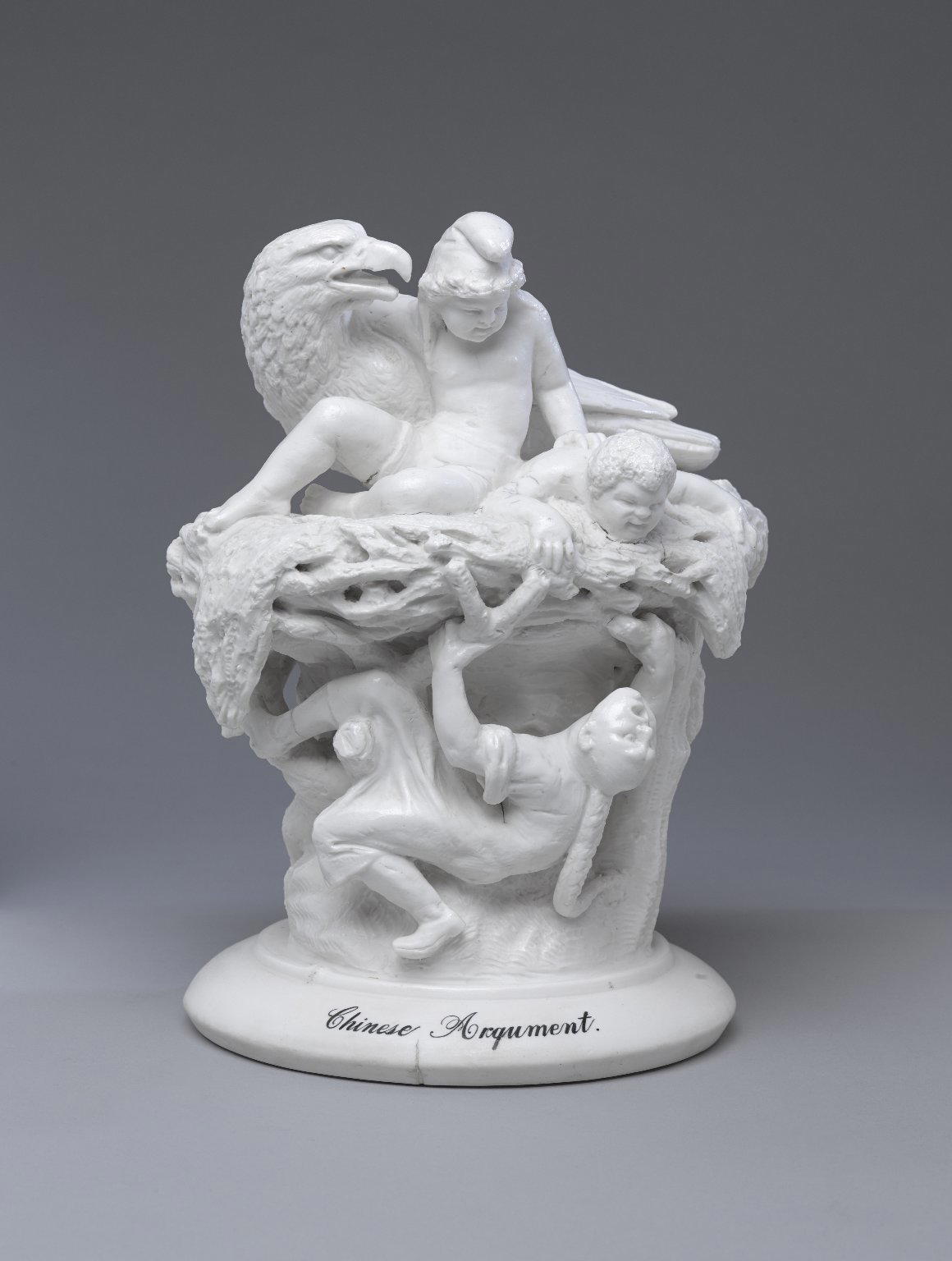"Chinese Argument" Figural Group

Brooklyn Museum photograph
Object Label
This sculpture reflects the debate surrounding the 1882 Chinese Exclusion Act, which curtailed Chinese immigration. The influx of Chinese workers began in earnest with the California Gold Rush of 1848. With an economic downturn in the 1870s, many Americans saw Chinese immigrants as competition for scarce jobs.
Caption
Karl L. H. Müller (American, born Germany, 1820–1887). "Chinese Argument" Figural Group, ca. 1882. Porcelain, H: 11 1/4 in. (28.6 cm). Brooklyn Museum, Gift of John D. Rockefeller III and Eleanor Wallace, by exchange, 2009.70. (Photo: Brooklyn Museum)
Gallery
Not on view
Collection
Gallery
Not on view
Collection
Designer
Manufacturer
Title
"Chinese Argument" Figural Group
Date
ca. 1882
Geography
Place manufactured: Brooklyn, New York, United States
Medium
Porcelain
Classification
Dimensions
H: 11 1/4 in. (28.6 cm)
Inscriptions
on front bottom of base in black: "Chinese Argument"
Credit Line
Gift of John D. Rockefeller III and Eleanor Wallace, by exchange
Accession Number
2009.70
Have information?
Have information about an artwork? Contact us at